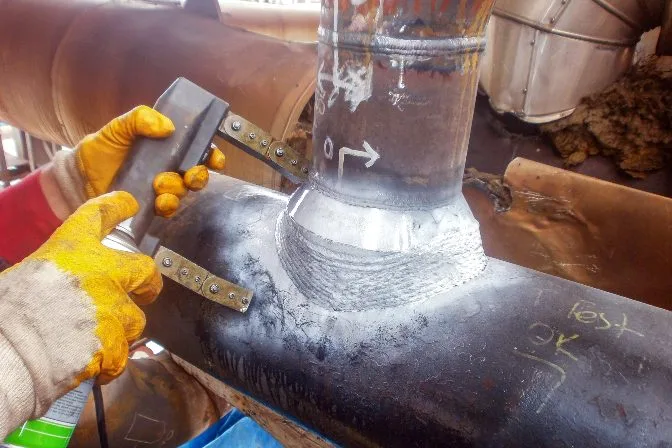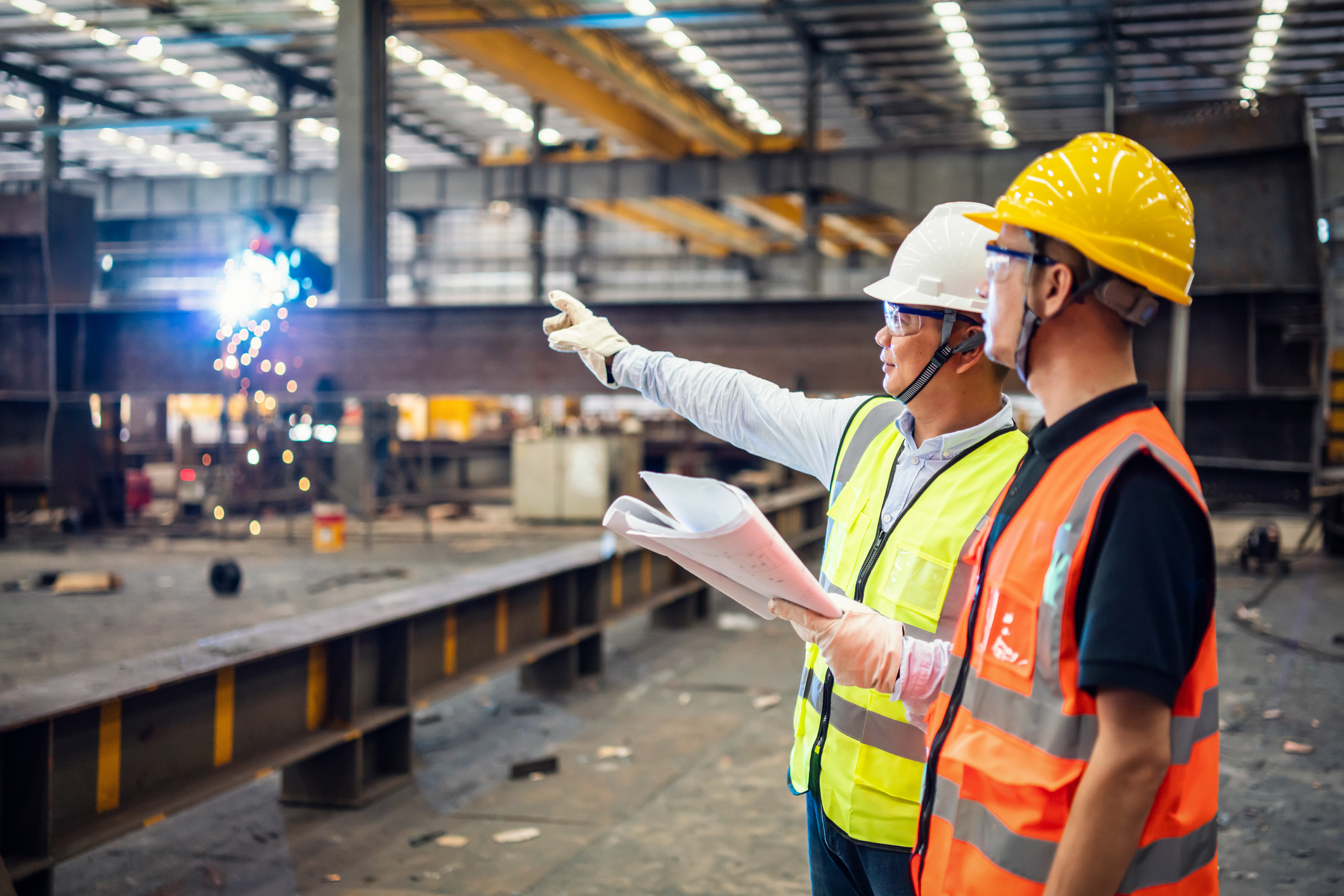Advanced Houston Welding Inspection Techniques for Accurate Outcomes
Checking Out the Fundamentals of Welding Assessment: A Detailed Assessment of Processes, Tools, and the Value of Quality Assurance in Welding Industries
Welding examination offers as a cornerstone in the upkeep of security and architectural stability throughout various markets. Recognizing the ramifications of these practices raises important questions regarding their efficiency and the future instructions of top quality assurance in welding.
Relevance of Welding Evaluation
Welding examination plays a critical duty in ensuring the stability and security of welded structures. It functions as a methodical strategy to reviewing weld high quality, identifying potential issues, and ensuring compliance with established standards and requirements. The relevance of welding inspection extends beyond mere adherence to regulations; it is critical in safeguarding human lives and protecting financial investments in framework.
Malfunctioning welds can bring about disastrous failures, causing considerable financial losses, injury, or loss of life. Extensive evaluation procedures are essential to identify problems such as inadequate penetration, porosity, or splits before they intensify into critical failures. Additionally, reliable welding examination adds to the total performance and long life of frameworks, making sure that they can endure the problems for which they were developed.
Moreover, the execution of welding evaluation cultivates a society of quality and liability within the welding market. By focusing on evaluation, companies demonstrate their dedication to quality, consequently enhancing their online reputation and competitiveness in the industry. Ultimately, welding assessment is not merely a step-by-step action however a basic component of design honesty and security guarantee, essential for the successful implementation of welding jobs across various sectors.
Secret Assessment Processes
A thorough method to welding examination involves a number of key processes that are essential for making certain weld high quality and architectural honesty. The very first essential process is visual examination, which permits examiners to recognize surface area defects such as cracks, porosity, and inappropriate grain look. This method offers as an initial evaluation to guarantee that the weld satisfies defined criteria.

In addition, devastating screening may be performed on example welds to examine their mechanical residential properties and efficiency under stress and anxiety. This procedure entails influence, tensile, and fatigue screening to confirm that the weld can hold up against functional conditions.
Finally, documentation and coverage are vital elements of the inspection procedure. Keeping accurate documents of assessments, monitorings, and examination results helps ensure conformity with market requirements and helps with continuous renovation in welding practices. Collectively, these vital procedures develop the backbone of reliable welding assessment and quality control.
Tools for Weld Examination
Countless tools are important for reliable weld examination, each developed to assess different facets of weld high quality and performance. Amongst the most extensively used are aesthetic examination tools, consisting of magnifying glasses and borescopes, which allow inspectors to determine surface flaws such as splits, porosity, and inappropriate blend.
Furthermore, ultrasonic screening (UT) devices is essential for finding inner flaws. This device utilizes high-frequency acoustic waves to expose suspensions within the weld, making certain the stability of the product. Radiographic testing (RT) devices, which make use of X-rays or gamma rays, likewise provide understanding right into the interior framework of welds, permitting the recognition of gaps or additions.
For exact measurements, calipers and assesses play a substantial role in making certain and establishing weld dimensions adherence to specified tolerances. Firmness testers review the mechanical homes of the weld, guaranteeing it fulfills performance requirements.

Techniques for Evaluating Quality
Exactly how can the high quality of welds be accurately analyzed? A selection of methods are employed to examine weld stability and make sure adherence to defined requirements. Aesthetic assessment is one of the most essential approach, permitting inspectors to determine surface area flaws such as splits, porosity, or damaging. This non-destructive method functions as an initial evaluation before advanced approaches are made use of.
Ultrasonic testing (UT) is another noticeable strategy that utilizes high-frequency audio waves to identify interior problems within the weld. Houston Welding Inspection. This method provides a thorough view of the weld's stability without jeopardizing its architectural honesty. On top of that, radiographic screening (RT) employs X-rays or gamma rays to disclose inner problems, using thorough insights right into weld top quality
Magnetic bit testing (MT) is reliable for finding surface and near-surface discontinuities in ferromagnetic products, making use of electromagnetic fields and colored fragments to highlight flaws. Lastly, dye penetrant screening (PT) can be used to reveal surface-breaking flaws by applying a dye that seeps right into cracks and is ultimately revealed.
Conformity With Industry Criteria
Compliance with market standards is crucial for making sure the quality and security of bonded structures. These criteria, established by organizations such as the American Welding Society (AWS) and the American National Specification Institute (ANSI), offer guidelines that regulate the welding process, products, and inspection procedures. Complying with these requirements not only makes sure the architectural integrity of welds however additionally mitigates dangers connected with failures that can lead to tragic repercussions.

Welding inspectors are tasked important source with confirming conformity with these criteria throughout the welding process (Houston Welding Inspection). This involves analyzing welding treatments, keeping track of welder credentials, and performing thorough examinations of the end product. Non-compliance can result in substantial monetary effects, task hold-ups, discover this info here and damages to a company's reputation
Moreover, conformity promotes a culture of quality assurance within the company. By establishing clear expectations and benchmarks, companies can maintain consistency in their result and improve general performance. Normal training and updates on criteria are important to keep personnel informed and skilled, ensuring that all aspects of welding procedures fulfill or surpass governing demands. Inevitably, commitment to industry criteria works as a structure for excellence in the welding sector, promoting safety and security and dependability in bonded structures.

Conclusion
In conclusion, welding assessment serves as a vital component in preserving the safety and stability of welded structures. Adherence to sector criteria makes certain compliance and advertises a society of quality within the welding market.
In addition, the execution of welding evaluation fosters a culture of quality and accountability within the welding sector. Eventually, welding evaluation is not simply a step-by-step step yet a basic component of engineering honesty and safety guarantee, important for the successful execution of welding projects throughout different industries.
A detailed strategy to welding evaluation includes a number of vital procedures that are crucial for ensuring weld high quality and architectural honesty. These criteria, developed by companies such as the American site web Welding Society (AWS) and the American National Requirement Institute (ANSI), supply guidelines that regulate the welding process, products, and examination protocols.Welding inspectors are tasked with verifying compliance with these standards throughout the welding procedure.